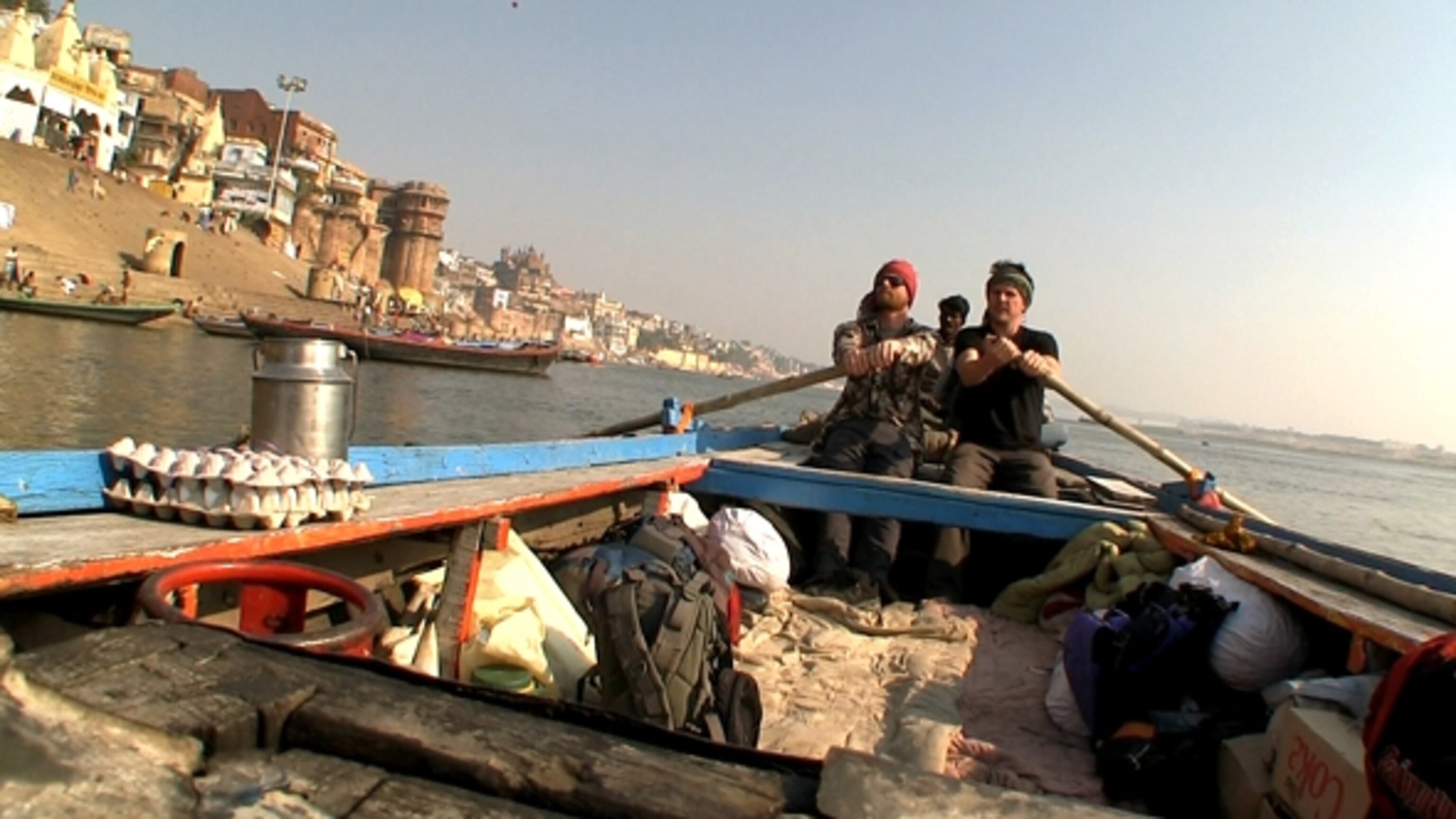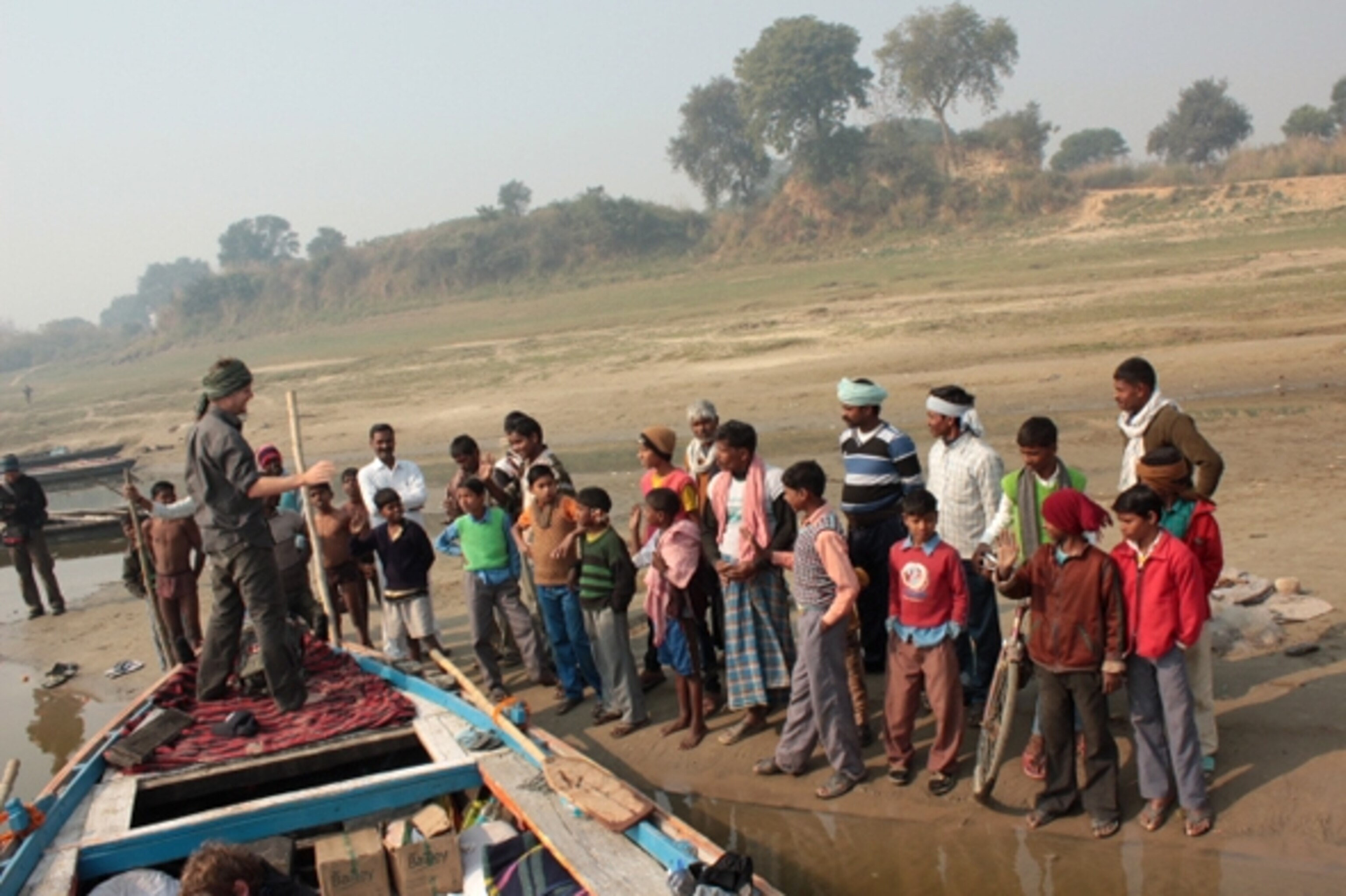
Life and Death on the Ganges
Our boat was a beauty and her name was Sita. For ten days, she was our home on the Ganges – our portal into a world of few boundaries, where Hinduism is palpable and life and death confront the senses with brazen, and equal, abandon.
Women dressed in vibrant saris splash the holy water across the small frames of their children while, just a stone’s throw away, bodies of animals and humans brush against the banks as they work their way downriver.
Never before had I seen so much death nourish so much life. It was astonishing.
India’s river of extremes had called to me for a long time, in the same way Everest calls to the avid climber. But it was five years ago, during a conversation with one of the most well-traveled people I have ever met, the late Waterkeeper Alliance lawyer, Douglas Chapman, that my Ganges fascination reached fever pitch.
When I asked Chapman, “What’s the best country you’ve ever visited?,” he said “India” with a gleam in his eye. When I asked what the worst had been, he replied without hesitation: “India.” That’s when I knew I had to experience it for myself.
Tracing India’s Lifeline
My journey began in Rishikesh, where the Ganges descends from the Himalayas, bringing life, rebirth, and death to millions throughout India.
I had brought two trusted “river rat” friends, Doug and Cliff, who have accompanied me on many previous expeditions along for the ride as well as a first timer, Matt, an entrepreneur who wanted to take a break from the corporate grind. And we were ready for an adventure.
When we finally reached the banks of the holy river, we submerged our bodies in its cold waters to wash away our sins and bless our travels. Then we met Ravi, our boatman, who makes his living as a private guide for Kensington Tours in Allahabad, and the lot of us began paddling to the dusty town of Gazipur, 250 miles to the east — deep into an India un-glimpsed by most Western eyes.

Sita’s 40-foot frame sliced through the sediment with ease as we sank our large bamboo oars into the river’s depths. As we propelled ourselves ever forward, with Ravi at the stern, we passed a magnificent array of contradictions and extremes: ancient ghats, brilliant flowers, bloated pig carcasses, endless farms, forgotten ruins, bustling cities.
One afternoon, as we floated past a funeral procession, I asked Ravi how his people grieved when loved ones died. “When someone has lived a long time, we cannot be sad,” he replied. “We celebrate their passing.”
It made sense. We had rowed past several dozen cremations on our trip, and the scene was always the same: Families and friends looking on as a body wrapped in silk and decorated with marigolds and religious icons was set ablaze beside the holy river.
There was never any wailing or crying. Instead, we were greeted with waves and the odd person eager to practice their broken English proclaiming “Hello!” Death was no stranger on the Ganges. Just like the birth of a child, a good harvest, or an illness overcome, dying was viewed as a vital and sacred part of the human experience.
Hinduism and the Ganges
As a Kensington Tours Explorer-in-Residence, local guides greeted us on the river bank in the holy cities of Allahabad and Varanasi. Proud and spiritual, these men had been born and raised in these cities and provided priceless context to the everything we were witnessing. With their help, we were able to glimpse what life was really like for the people who live along this sacred waterway.
One morning in Varanasi, I watched as a man stood waist deep in the river drinking water from cupped hands and praying, while a decaying dog floated by only feet away. Acknowledging the dog, he displayed no hesitation when it came to bathing in the same water. This was not the exception; it was the rule.
I came to understand the Hindu belief that the stronger your connection to the Ganges, the better your chances of improving your status through reincarnation. For Hindus, the river is literally a living goddess, Ganga Ma. Thus, there is a holiness to all that enters its waters, living or dead.
Further downriver at the foot of an unassuming ghat, Ravi turned to us and said: “Here we embrace death, as it defines life. We bathe in and pray for Ganga Ma, for she washes away our sins and directs our reincarnation. Her waters give us hope that we can one day be liberated from this endless cycle of birth and death, and attain nirvana.”
Every River Runs its Course, Finding Life After Loss on the Ganges
On our last day in India, I found out my Gramma had passed away. She was 83 years old and had enjoyed good health and comfort all her life. Still, I was shocked by her sudden passing. Isolated on the other side of the world, I walked a stretch of beach alone just before sunset to say goodbye to her and to India. In my experience, nature is the best healing agent – the only way to make sense of things that make no sense.
As I watched the sun set, I realized something I had never realized at home. It was something that India, the Ganges, and Ravi had taught me. Ultimately, it was this lesson that unconsciously prepared me to deal with this personal loss.
Without death, life loses its meaning. In the West, death is something we deny and fear because it’s something we can’t control or even understand. But after rowing the Ganges I learned death is as purposeful as the setting sun. Death is necessary for life to continue and, like it or not, we all play our part in the circle.
Brett Rogers is an acclaimed river explorer, filmmaker, Kensington Tours Explorer-in-Residence and Explorers Club Member. Follow his adventures on Twitter @brettonthewater.
Go Further
Animals
- Octopuses have a lot of secrets. Can you guess 8 of them?
- Animals
- Feature
Octopuses have a lot of secrets. Can you guess 8 of them? - This biologist and her rescue dog help protect bears in the AndesThis biologist and her rescue dog help protect bears in the Andes
- An octopus invited this writer into her tank—and her secret worldAn octopus invited this writer into her tank—and her secret world
- Peace-loving bonobos are more aggressive than we thoughtPeace-loving bonobos are more aggressive than we thought
- Why are these emperor penguin chicks jumping from a 50-foot cliff?Why are these emperor penguin chicks jumping from a 50-foot cliff?
Environment
- U.S. plans to clean its drinking water. What does that mean?U.S. plans to clean its drinking water. What does that mean?
- Food systems: supporting the triangle of food security, Video Story
- Paid Content
Food systems: supporting the triangle of food security - Will we ever solve the mystery of the Mima mounds?Will we ever solve the mystery of the Mima mounds?
- Are synthetic diamonds really better for the planet?Are synthetic diamonds really better for the planet?
- This year's cherry blossom peak bloom was a warning signThis year's cherry blossom peak bloom was a warning sign
- The U.S. just announced an asbestos ban. What took so long?The U.S. just announced an asbestos ban. What took so long?
History & Culture
- See how ancient Indigenous artists left their mark on the landscapeSee how ancient Indigenous artists left their mark on the landscape
- Why Passover is one of Judaism’s most important holidaysWhy Passover is one of Judaism’s most important holidays
- Is this mass grave a result of contagion—or cannibalism?Is this mass grave a result of contagion—or cannibalism?
- The surprising story of how chili crisp took over the worldThe surprising story of how chili crisp took over the world
- We swapped baths for showers—but which one is better for you?We swapped baths for showers—but which one is better for you?
Science
- Why outdoor adventure is important for women as they ageWhy outdoor adventure is important for women as they age
- 4 herbal traditions used every day, all over the world4 herbal traditions used every day, all over the world
- Ground-level ozone is getting worse - here's what that meansGround-level ozone is getting worse - here's what that means
- Would your dog eat you if you died? Get the facts.
- Science
- Gory Details
Would your dog eat you if you died? Get the facts. - In a first, microplastic particles have been linked to heart diseaseIn a first, microplastic particles have been linked to heart disease
Travel
- Why it's high time for slow travel in Gstaad
- Paid Content
Why it's high time for slow travel in Gstaad - How citizen science projects are safeguarding Costa Rican pumasHow citizen science projects are safeguarding Costa Rican pumas
- These guides spend their lives looking for dolphins. They’re dogs.These guides spend their lives looking for dolphins. They’re dogs.